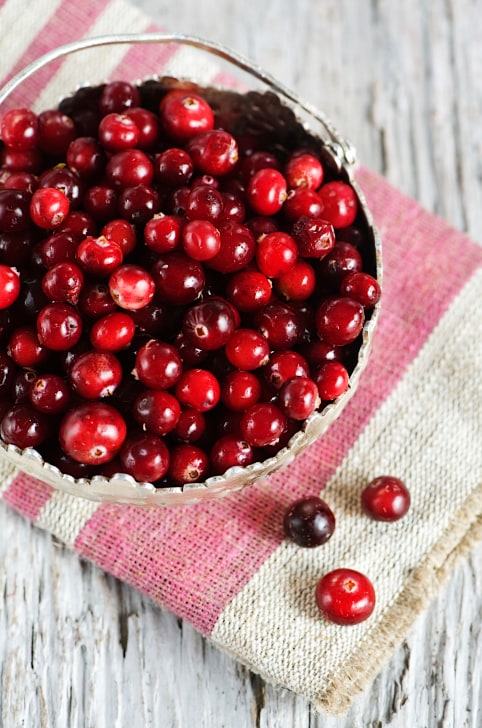 Cranberries are a group of evergreen dwarf shrubs. The fruit is a berry which is larger than the leaves of the plant. The fruits are initially white, but they turn deep red when fully ripe. It has a somewhat acidic taste that adds to its sweetness.
Cranberries are a group of evergreen dwarf shrubs. The fruit is a berry which is larger than the leaves of the plant. The fruits are initially white, but they turn deep red when fully ripe. It has a somewhat acidic taste that adds to its sweetness.
Usage
Most of the cranberries produced are processed into making products like juice drinks, sauce and dried cranberries. Cranberries as fruit are cooked as cranberry sauce. Such preparations are traditionally served with roast turkey, which is a staple dish of the traditional English Christmas dinners, and is also prepared during Thanksgiving.
Cranberries are also used in bakery goods, sorbets, ice creams, desserts etc. Cranberry wine is made in some of the regions of the United States and Canada where cranberries are grown. Fresh cranberries are available from October to December.
Bright red berries should be chosen which are free from any wrinkles. Fresh berries can be stored in the refrigerator for several days. Shriveled or sticky berries should not be stored as they have a very short shelf life if kept at room temperature. Raw, fresh or dried cranberries can be eaten as snack. In India you can find the frozen or dried varieties in leading supermarkets.
Nutritional Value
1. Cranberry juice is known to be effective in treating urinary tract infections because it inhibits bacteria from attaching to the bladder and urethra.
2. Cranberries have a very high antioxidant and phytonutrient capacity, which is known to prevent cholesterol from forming in the heart.
3. They are a great source of vitamin C and fiber.
Did you know?
The freshness of cranberries can be tested by bouncing them. Only the freshest and the ripest ones would bounce. Cranberries take three years to mature from planting to first harvest.
[“source-ndtv”]








